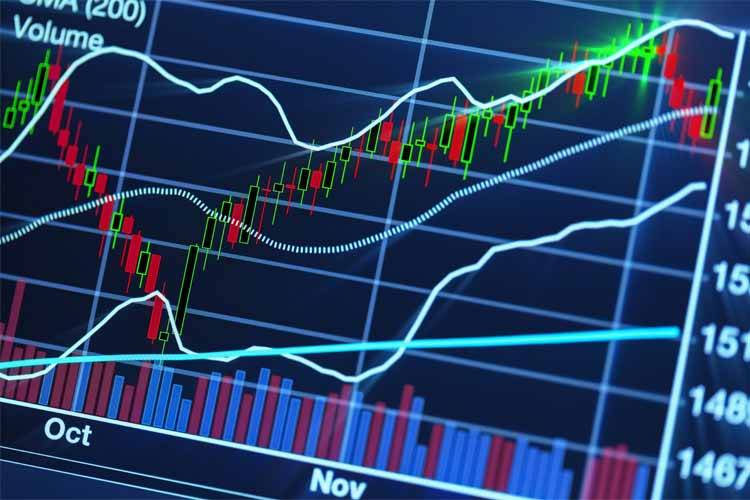
With the GOP healthcare reform plan in focus, XLV appears to be in the process of forming a triple top
It didn't take any particular knack for prognostication to anticipate that healthcare stocks would come into focus during 2017, as the Trump administration looked to take on the intensely polarizing issue of Obamacare. Perhaps in anticipation of some business-friendly reforms, traders sent the Health Care Select Sector SPDR Fund (XLV) shooting higher in the days immediately after the election -- but it was only about a month ago, on Feb. 13, when XLV finally closed above its Nov. 10 post-vote intraday peak of $72.08.
This technical development may have been the catalyst that prompted two days of back-to-back, big-scale bullish speculation on XLV. Major call buying activity on Wednesday, Feb. 15, and again on Thursday, Feb. 16, resulted in nearly 86,000 new contracts of open interest at XLV's March 76 strike. A single trader appears to have been responsible, with Trade-Alert pointing to two outsized lots (40,500 on Feb. 15 and 38,800 on Feb. 16) that accounted for the bulk of the volume. Now, with 95,634 contracts in residence, the March 76 call is comfortably the most popular XLV strike; the runner-up is the June 69 put, with a comparatively minimal accumulation of 34,411 contracts.
At the time of that mid-February flurry of options activity (which, over the course of two trading days, generated what currently amounts to 90% of total XLV March 76 call open interest), the fund was trading right around $73.60. Now, roughly one month later, those XLV March 76 call options have doubled in value. They were originally purchased in the neighborhood of $0.19 each -- and while implied volatility on the option is currently about flat with its month-ago levels, XLV shares have risen to trade just pennies below that strike price, as of Friday's close at $75.98. As a result, the XLV March 76 call was marked at $0.42.
But what are the odds of XLV taking out $76 by the time these options expire at the end of the week? And for that matter, what are the odds of XLV taking out $76 on any given week? Looking back at the past few years, this chart level marked peaks for the healthcare ETF in March 2015 ($76.01), August 2016 (squarely at $76), and again as recently as Friday ($76.09). And during one particularly relevant 10-week stretch in June-August 2015, during which XLV traded above $76 with some regularity, the fund managed only two weekly closes above this price point (with the June 26, 2015 weekly finish at $75.99, so closely echoing this past Friday's, also worthy of mention).
To provide some context, the $76 level roughly corresponds with double XLV's December 2007 high, which stood as the fund's record peak until April 2012. Not insignificantly, this area also coincides with a doubling of XLV's November 2012 post-presidential election lows. And narrowing the focus to more recent chart history, $76 is in the vicinity of XLV's 10% year-to-date gain. The propensity of investors to take profits at such levels, combined with the tendency of heavy call open interest accumulations to provide options-related resistance due to the hedging mechanism, suggests a somewhat extreme longshot that XLV will manage a meaningful breakout above the 76 strike prior to front-month expiration.
It's also of concern that the gains in XLV have been fueled, to a degree that's almost certainly non-trivial in nature, by ongoing short-covering support. Short interest on the fund has been on the decline since its mid-January 2016 peak at 67.31 million shares, and currently stands at less than half those levels, at 26.87 million shares (as of the March 1 update) -- the lowest reported accumulation of XLV short interest since mid-December 2013, for what it's worth.

The added dimension of this short interest data tells us that the frenzied XLV call buying in mid-February was most likely not related to the hedging of a short position on XLV shares, since the number of calls purchased over those two days could have sufficiently hedged total XLV short interest twice over (and then some). And so we can file at least some significant portion of those high-volume March 76 call purchases from a month ago under the heading of "bullish speculation."
All of which is to say that, as we head into March options expiration week, we have two key sentiment factions for XLV. On the bullish side, we have the mid-February call buyers, who are looking for the fund to break out meaningfully above familiar resistance before this Friday's closing bell. And on the bearish side, we have the core group of entrenched short sellers who have held firm on XLV despite its recent gains, and who are now surely feeling anxious to get an assist from established chart resistance. In the short term, it seems like a clearly defined formula for at least an expiration-week "pin" around the $76 strike, or possibly even a modest pullback from this level -- with the caveat being the increased short-term likelihood of a significant fundamental catalyst higher or lower from Capitol Hill.
From a broader view, though, XLV's relationship to $76 on a closing weekly and monthly basis in March should produce valuable clues to its next direction. With previous highs clocked in this same area in each of the past two calendar years, a retreat from this level in March would effectively confirm a "triple top," leaving XLV vulnerable to a continued decline to mid-60s -- home to its monthly closing lows in 2015 and 2016, and just south of its supportive 40-month moving average.

Subscribers to Bernie Schaeffer's Chart of the Week received this commentary on Sunday morning. Sign up for this free weekly newsletter to get exclusive early access to Bernie's latest stock market analysis.